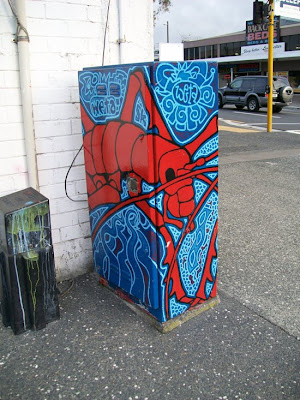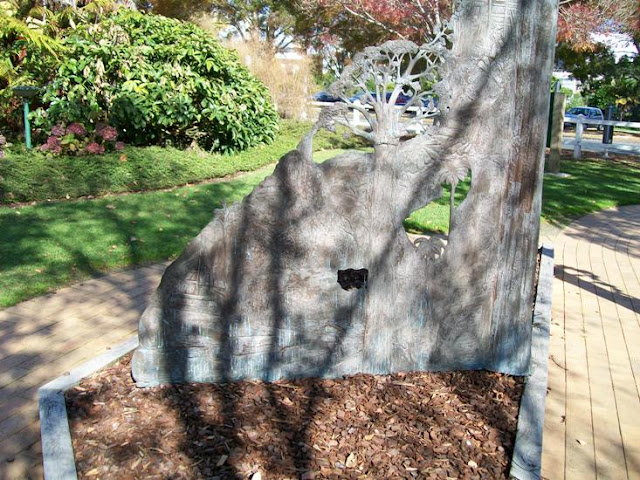Image from Wiki.
We used to have a set of regulations called the Municipal Police Act which determine all sorts of things the public couldn't do in the early city of Auckland. One such thing was the pushing of perambulators, those handy conveyors of mere babies, upon the footpaths of the town. This from the Southern Cross, 26 January 1871.
During the very hot weather which has existed for some time past, a practice has become so common that there is a likelihood that the rough hand of the policeman will have to put a stop to it. Many people have made complaints to the police owing to the way the footpaths in our principal thoroughfares are crowded in the busiest part of the day with perambulators containing babies. The Municipal Police Act makes such practice a punishable offence by imposing a fine of £10 and coats, or an alternative of three months' imprisonment. The following is the wording of sub-section 3 of section sof the Act : — " Leading or riding any horse or other animal, or drawing, wheeling, or driving any cart, carriage, sledge, truck, harrow, or other thing, upon any footpath," shall be liable to the above punishment. It may not be generally known that the Act in question gives any constable, with or without a warrant, power to arrest any person offending against the above clause. It has been owing to the forbearance of the police that arrests have not been made hitherto. Nurses and servant-girls, and even mothers going out with perambulators, should keep the above clause before their eyes, if appearing at the Police Court, with baby and perambulator, to answer a charge of a breach of the municipal law be a matter which has any terrors for them.
The patience of the editors at the Southern Cross seemed to become more strained as the year wore on. This from 29 November 1871.
Perambulators are becoming a great nuisance in our thoroughfares, and should, we think, be subject to such police regulations as would prohibit them from being nurserymaided through the public streets, excepting only between the hours of twelve o'clock at night and six in the morning. The highest medical authorities state that if parents desire to forward their children to another world, without incurring a charge of wilful murder or manslaughter, they cannot do better than send one or more out in a perambulator in charge of a girl who is fond of stopping and talking to her sweetheart, or looking into drapers' shop windows. On hot days, with the sun's rays striking down fiercely, children get brain disease and die suddenly. In cold weather their blood becomes chilled, and they go into consumption. It stands to reason that the former method is the quicker and more economical way of disposing of them. The latter is a tedious and costly process.
Then, matters seemed to come to a head in 1873. This from the Southern Cross, 25 June 1873:
Two nursemaids were summoned for wheeling perambulators on the footpath in Queen-street. Both defendants were dismissed with a caution; but Dr. Nicholson expressed a hope that the reporters would make public the fact that the act complained of was an infringement of the by-laws of the city.What sparked my interest in mid-Victorian era personal transport for infants? Well, it seems the above case led to a correspondent sending a letter to the Auckland Evening Star, berating the members of the Auckland City Council, which the editors there duly published on 4 July 1873:
"Sir,The Star took up the cause, in a way which might well get similarly ardent newspaper proprietors sued (at least!) these days ...
"In crowded towns and cities in England, such as Liverpool and London, where servants are easily obtainable at a low rate of wages, perambulators are allowed in their proper place, i.e., on the footpath, out of danger; but in a village like Auckland a lady who cannot get a decent servant for love or money, and who has to wheel her own perambulator, is driven into the dirty road amongst the horses and carts, to the great danger of herself and child. What can be more absurd than for beings calling themselves business men to fool away their time and annoy the public by passing such ridiculous laws. Should any life be lost or accident happen (and it cannot be long before we hear of something of the kind), the blame will rest with the city Tom Noddies whose mean and cowardly ideas have prompted them to pass a regulation oppressive and dangerous to the weaker sex and their offspring.
I am, &c., Toby."
We very cordially endorse the sentiments of the foregoing letter. The resentment of the City Council against the sweet little innocents that nestle so cosily in their perambulators would be to us unaccountable did we not know that of the City Council no less than four members have not been so far blessed by nature as to know the sweet and tender emotions of a father's love. Dried sticks are they that are bereft of the milk of human kindness, and know not what it is to dandle a little cherub, their own flesh and blood, upon their knee, or imprint the kiss of fond parental tenderness upon its little cherry lips. Human ogres are they that know not the tender gushings of the heart at seeing the little chubby arms extended, and the little face lit up with glee to greet "papa." They would drive the little dears into the street, they would, the brutes; to bge trampled upon and run over by careering cabbies and rabid butcher boys, and Mrs Ryan's cows.
In the name of every thing that is parental in the city we protest against this majority of the City Council who have themselves done nothing to fulfill the great intent of nature by increasing and multiplying and replenishing the colony presuming to expose to certain death the innocent offspring of their betters. We can picture to ourselves the scowl of disappointed spleen of this impotent and unnatural majority as they behold these momentoes of conjugal affection paraded before their eyes. Why instead of the little darlings doing any harm as they roll along in their little carriages, they exercise, we believe, a great moral influence; and we can hardly understand how any man rushing along the Queen-street pavement, his mind pregnant with some great villainy in mining or other departments of swindling, could gaze on the little innocent faces without being stung by conscience.
Then, out of the road, ye barren and unprofitable City Councillors! and make way for the perambulators. They are the symbols of progress, and their little occupants will yet rule the land when you, ye dried up sticks -- ye barren fig trees -- ye unprofitable colonists -- will have crossed the Styx, leaving neither footprints on the sands of time, nor one to bear your name, going, as ye deserve, away down, down,
Down to the earth from whence you sprung,Unwept, unhonoured, and unsung.
Well, I'm not certain when the regulation barring perambulators from Auckland's footpaths was finally consigned to history (although I do wish some of the pushers today would pay more heed to other users of the same carriageways), but the Star attracted a few grateful fans for their stand on the issue back then. This from 8 July 1873.
We really must protest. We cannot do it, and we will not do it. Half the mothers of the city want to kiss us for having defended their little darlings and their perambulators from the City Council. We never kiss now, gave it over long ago; and we declare if we are bothered any more about this we will tell their husbands. We give positive warning. Let no deputation come here. We won't see it, we shall not be at home. Let the deputation spoken of wait on the City Council, and expend their caresses on the unhappy four. Visit them not in anger, but in love, in compassion, and in tenderness. Judge them not harshly. They are not unsusceptible to the sweet and melting influence of female loveliness. We know they are not, some of them especially. Try them. We bet they will kiss, and won't tell. But we warn the deputation to keep away from this, for we won't kiss, and we shall certainly tell.

























































